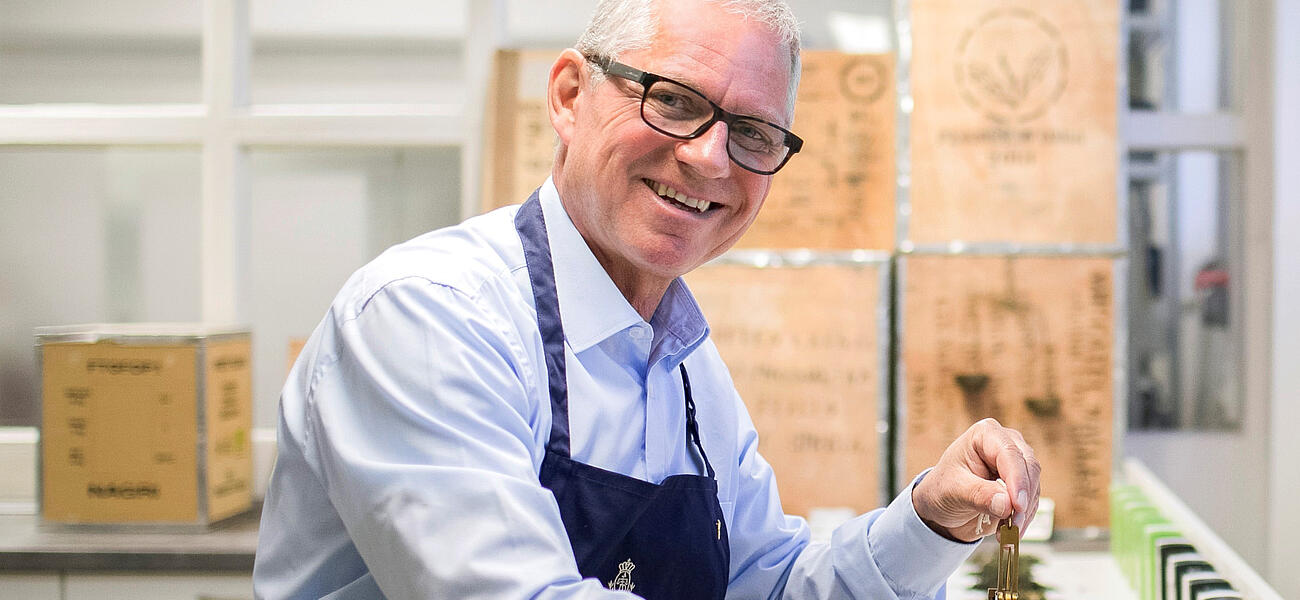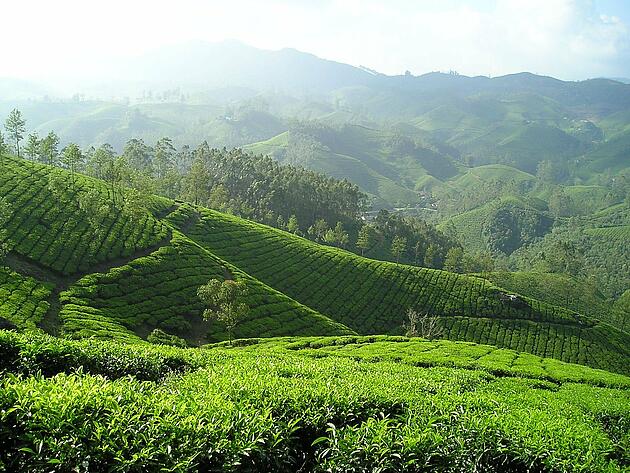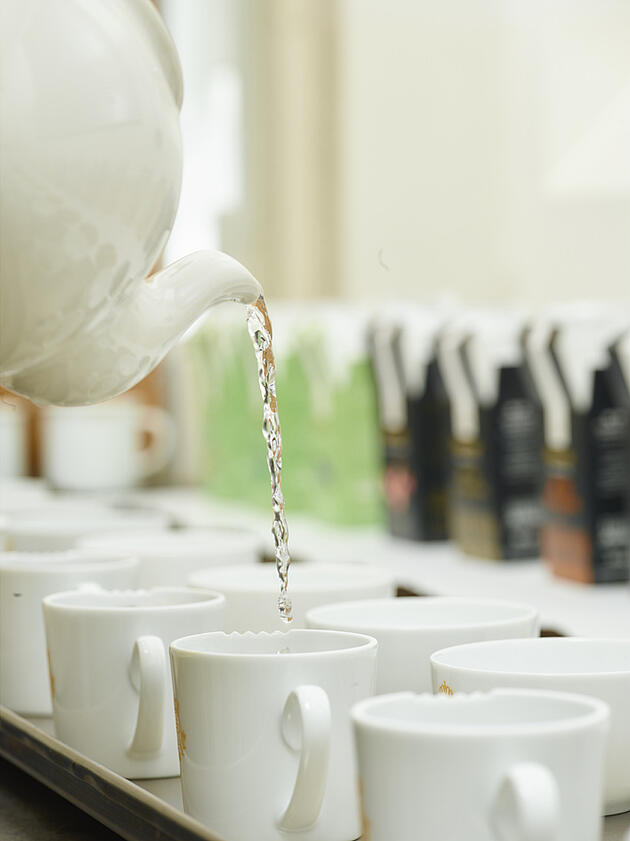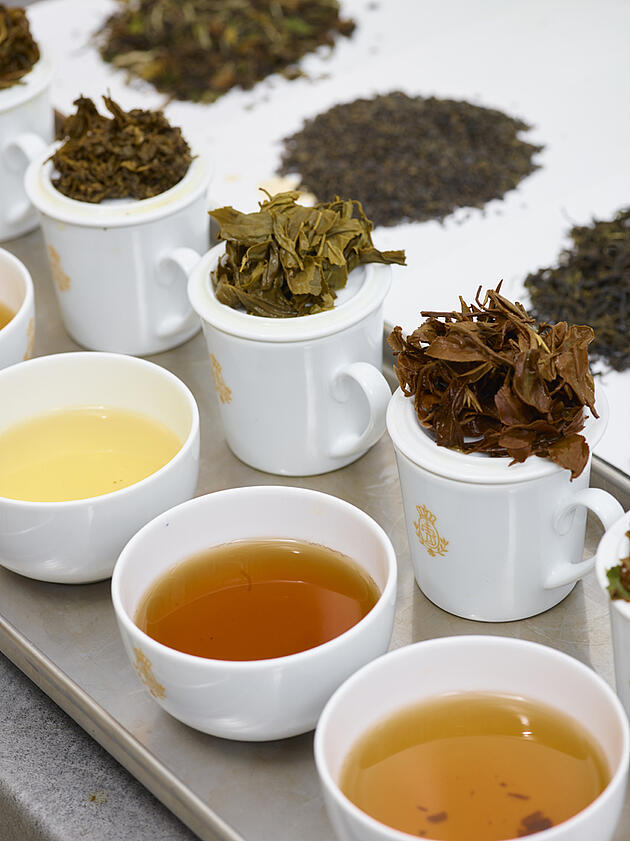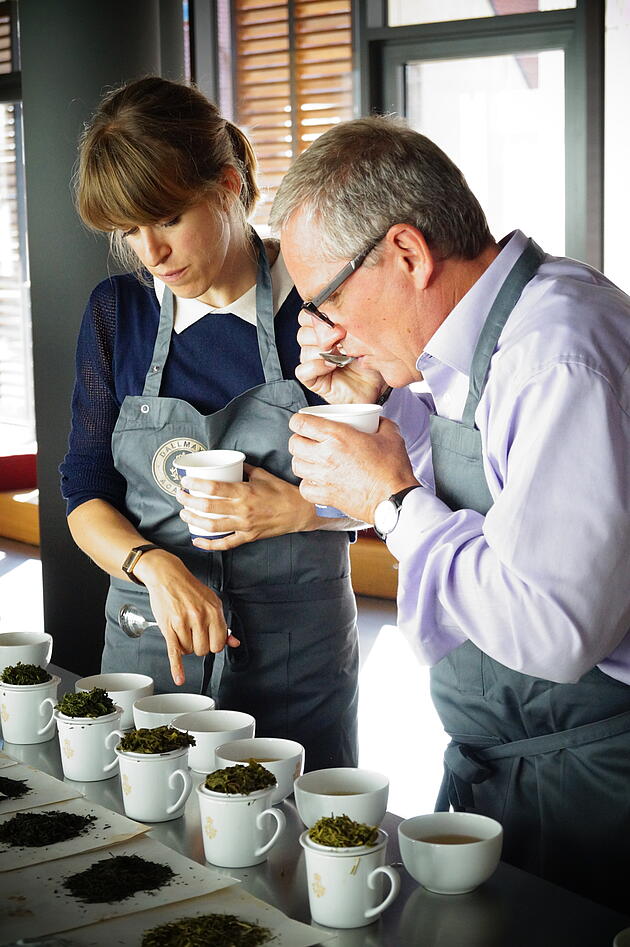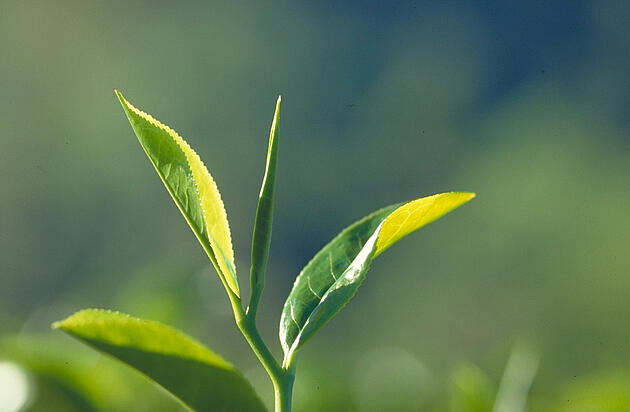Once tea is harvested in Darjeeling, it is usually ready to brew just a few hours later. However, it takes many tea samples and tastings before it reaches our tea department in Germany. What does tea’s journey to Dallmayr look like? How does a tea tasting work? And how complex is tea in terms of flavour? Our tea expert Rudolf Krapf tells us more.
Darjeeling: A tea-growing region in northern India
The dense morning fog covers the mountains of Darjeeling, and the air is pleasantly fresh. With the first rays of sunshine, the pickers are out amongst the tea plants. Baskets on their backs, they are carefully harvesting the tea – leaf after leaf. At the beginning of the season, the tea pickers place small and delicate leaves into their baskets. By midday, they’ll have carried around four kilos of fresh tea leaves to the plantation’s processing facility. The tea is ready by late afternoon – and could now be brewed into a flowery and aromatic cup of Darjeeling. But the long journey from the tea garden to Dallmayr has only just begun. Around 7,000 kilometres – and several tea samples and tastings – separate these tea leaves from being brewed in Munich.
Withering, rolling and drying
Each tea garden produces two batches a day. “The procedure is always the same,” explains Rudolf Krapf, who has been purchasing tea for Dallmayr since 1988. “Straight after picking, ventilators are used at the tea garden’s manufactory to remove moisture in the tea leaves. We call this stage ‘withering’. Then a method known as ‘rolling’ breaks down the structure of the leaves. Next up is oxidation. For fermentation, the tea is spread out and dried on long tables.”
The tea tasting
Next, the tea is packed in wooden boxes and transported to Kolkata, where it is subject to various tea tastings. Exporters in the auction room, agents and tea merchants drink their way through hundreds of samples. Finally, the best tea samples from Darjeeling arrive at our tea manufactory, where they are tasted by Rudolf Krapf. More than 30 teas are lined up on a long table – ready for tasting in Munich. The leaves – exactly 2.86 grams of tea – are infused with 150 ml of boiling water in a small, white porcelain pot. This weight corresponds to that of an old English sixpence coin – and is a standard used all over the world.
Strong tea for refined taste buds
“At a tasting, the tea is between two and three times stronger than what our customers will drink at home. Only then is it possible to bring out the incredibly subtle differences between each tea.” After five minutes, Rudolf Krapf pours the tea into the sample cup and examines its colour, aroma and flavour. He pulls the good teas to the front. How floral is the tea? Is it cloudy? Does it have a fruity flavour? “Darjeeling is characterised by a subtle fragrance of lily of the valley. It is brisk, lively and fresh. With Assam, on the other hand, the malty note is important. Ceylon has hints of lemon, while oolong tea tastes slightly bready with the fragrance of orchid and peach.”
Purely a matter of taste
Our tea experts have honed their taste buds over the course of many years. In total, the tongue can identify five tastes: sweet, sour, salty, bitter and umami, which is savoury and intense. By combining taste, smell and appearance, we can distinguish between around 30,000 subtle nuances.
Teas taste different – from harvest to harvest and from tea garden to tea garden. If the leaves are exposed to too much sun, the tea tastes slightly leathery. Rain and cool weather are perfect conditions for the tea. During a tea tasting, it’s the fine nuances that make the difference. “The nuances are incredibly subtle, but that’s what makes Dallmayr tea stand out – that it’s the best. Fortunately, there are 70 tea gardens in Darjeeling, so I can keep on looking until I’ve found the perfect tea for us,” Krapf explains.
First Flush Darjeeling – the champagne of teas
One thing’s for sure: when the pickers in the mountains fill their baskets once again with the first delicate tea leaves next March, Rudolf Krapf’s favourite time of the year begins. After all, the first harvest – the First Flush Darjeeling – is considered to be the finest, highest quality tea of all. Freshly brewed, it shines a bright golden colour in the cup – and each year, its flowery aroma is a true delight!
